Prunus africana
| Botanical Name | Prunus africana |
|||||||||||
| Family | Rosaceae - The rose family. |
|||||||||||
| Pronunciation | PROO-nus af-ri-KAHN-uh |
|||||||||||
| Common Name(s) | ||||||||||||
| Plant Group |
|
|||||||||||
| Plant Size |
|
|||||||||||
| Position |
|
|||||||||||
| General Information |
|
|||||||||||
| Specific Information | The leaves of Prunus africana are shiny green and similar to the leaves of a peach tree. When crushed, they have a faint smell of almonds. It can grow very large in its forest habitat but remains much smaller in gardens. In the dry environment of my garden it barely reaches 4 meters and is semi-deciduous, losing most of its leaves briefly during winter. Prunus africana is classified as Vulnerable, indicating that the species is facing a high risk of extinction due to over-exploitation of bark for the traditional medicine trade. In KwaZulu-Natal it is now locally extinct in more than half the forests in which it used to occur. It is a protected tree in South Africa. |
|||||||||||
| Ad Break | ||||||||||||
| Flowers | ||||||||||||
| Description | long, loose sprays of small scented flowers |
|||||||||||
| Season |
|
|||||||||||
| Colour |
|
|||||||||||
| Growth Rate |
|
|||||||||||
| Plant Uses |
|
|||||||||||
| Distribution and Habitat | from the Eastern Cape to Free State, KwaZulu-Natal, Mpumalanga, Limpopo and North West, as well as Swaziland, Zimbabwe, north into central Africa, and in Madagascar and the Comoros, in evergreen forests near the coast, inland mistbelt forests and afromontane forests |
|||||||||||
| Planting Suggestions | Mulch well and water regularly for optimum growth. For a successful result, try to mimic the tree's forest environment and provide plenty of water. The old method of digging a deep hole and filling it with soil and compost has resulted in many trees failing to thrive, dying, rotting at the base or worse still, falling over in later years due to poor root development. Refer to the following sites for the best method of planting trees: International Society of Arboriculture: New Tree Planting Tree People: Plant the right way For those of you who have a clay problem try: |
|||||||||||
| Medicinal Uses | The bark is exploited in Africa on a large scale where it is used to treat chest pains. It is also reputed to have magical properties and to be very poisonous. The bark is now also exported to Europe, America and Japan for use in the treatment of prostatic hypertrophy (noncancerous enlargement of the prostate gland). |
|||||||||||
| Ad Break | ||||||||||||


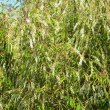
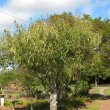
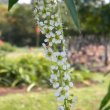

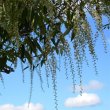
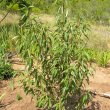
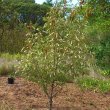
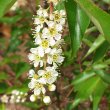


Comments
prunus africana
Is this the same as pygeum?
Pygeum africanum
Hi John
Yes it is. Prunus africana was previously named Pygeum africanum and before that it was known as Laurocerasus africana. It's hard to keep up with the name changes!
I have updated the photographs.
Discuss this plant
Share knowledge, ask a question or give an experience.